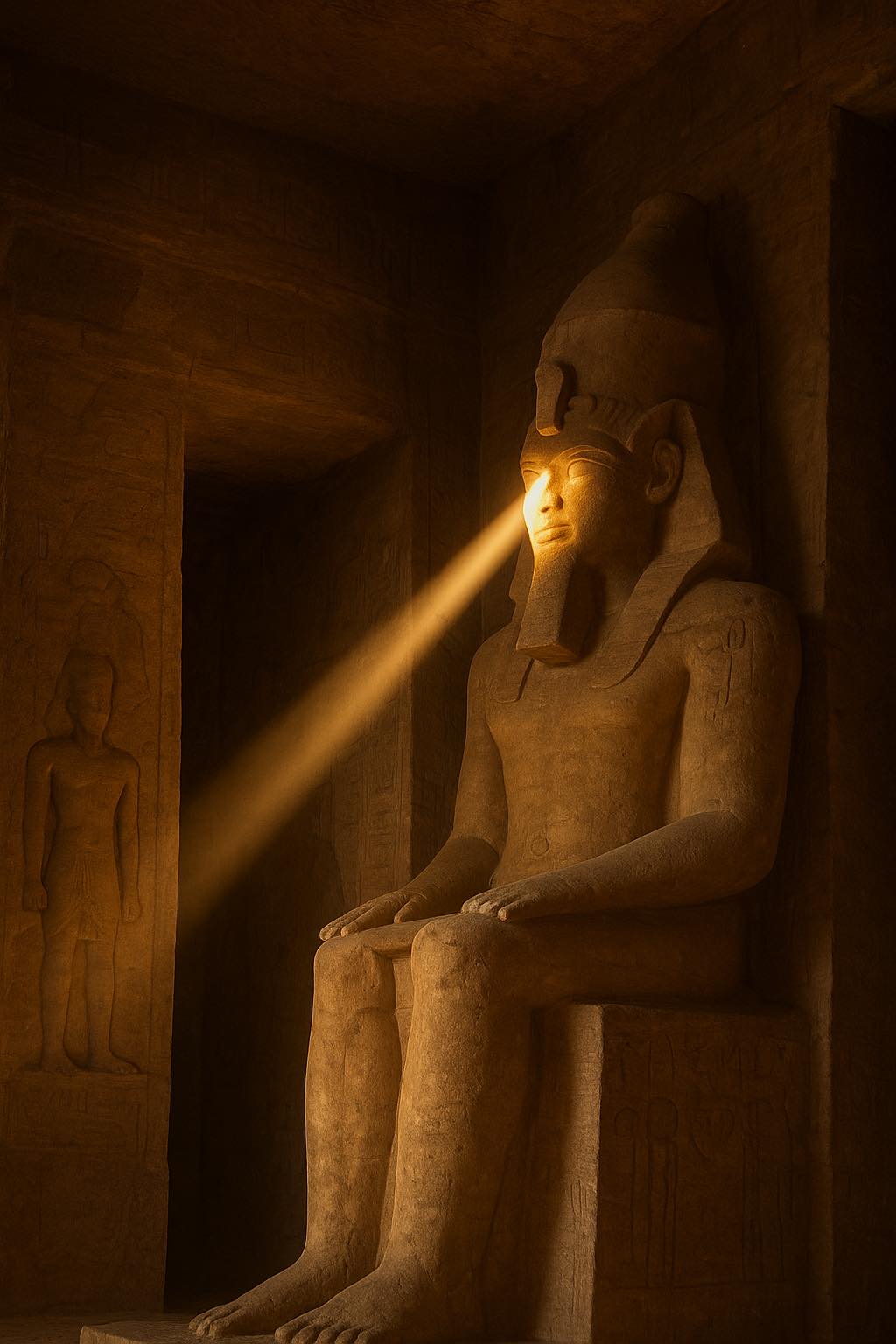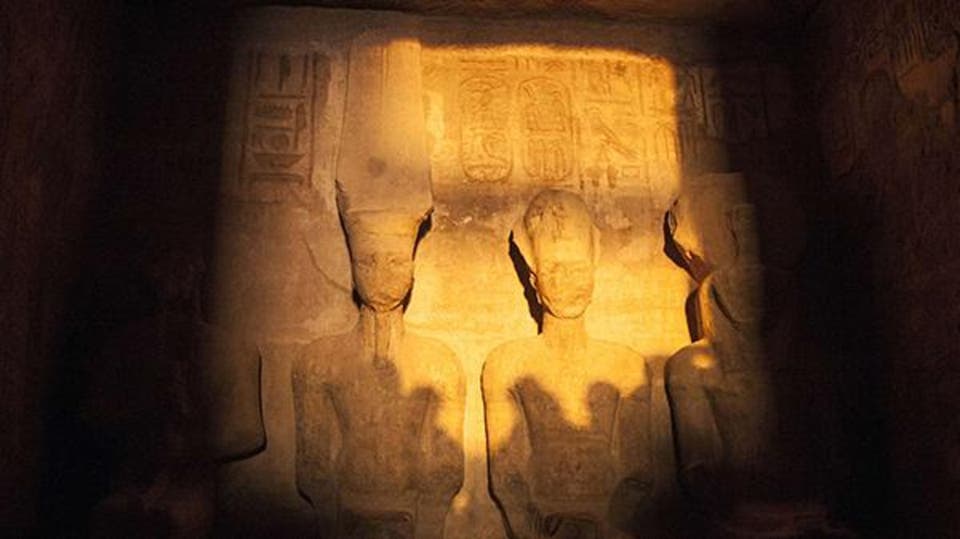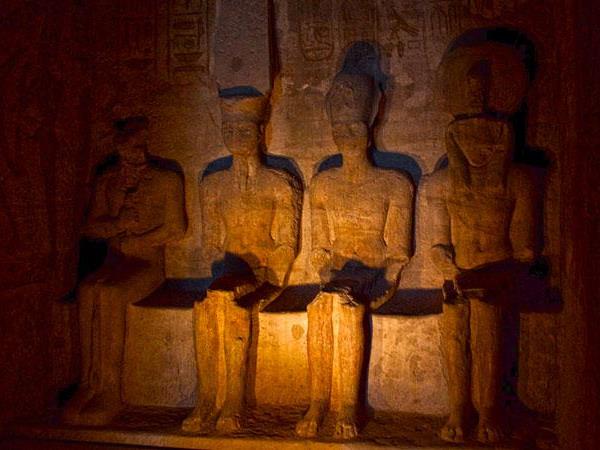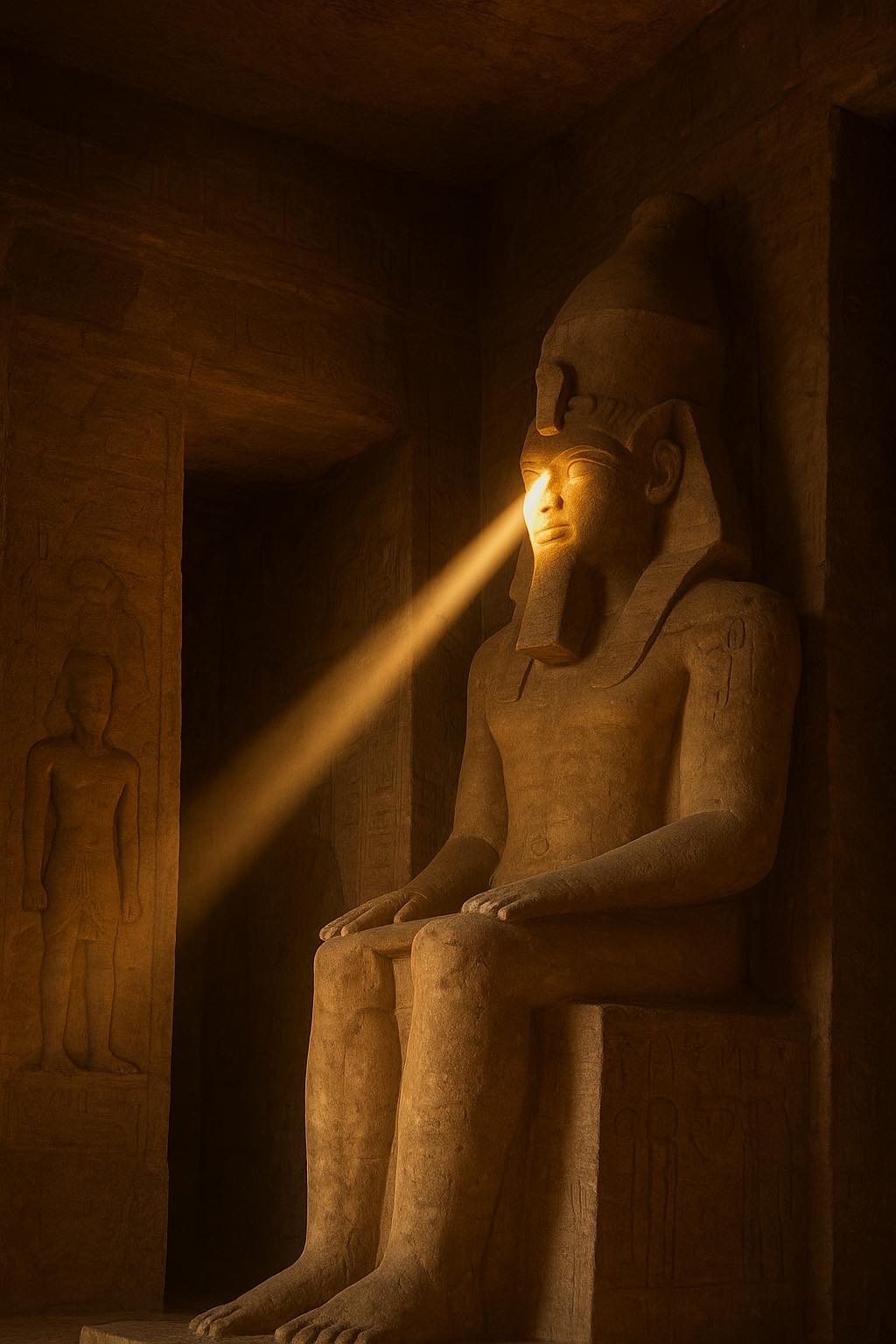As dawn broke over southern Egypt, thousands of travelers and locals gathered in hushed anticipation at one of the world’s most awe-inspiring monuments — the Abu Simbel Temples. Then, as if on cue, the first rays of the sun pierced through the ancient stone passage, traveling nearly 200 meters deep into the temple’s inner sanctuary, until they illuminated the majestic face of Pharaoh Ramses II.
This breathtaking event — known as the Miracle of the Sun — happens only twice a year, on February 22 and October 22, marking dates believed to celebrate Ramses II’s coronation and birthday. For more than 3,200 years, this celestial alignment has symbolized the unbroken bond between heaven and earth, light and life, king and god.
A Masterpiece of Ancient Precision

The Great Temple of Abu Simbel, carved directly into the sandstone cliffs overlooking the Nile, stands as one of the most astonishing achievements of ancient Egyptian engineering. Commissioned during the reign of Pharaoh Ramses II (1279–1213 BCE), the temple was designed with unparalleled astronomical precision.
Its grand façade features four colossal seated statues of Ramses II, each towering over 20 meters high, guarding the entrance to a sacred interior. Deep inside, the Holy of Holies houses statues of four deities: Ra-Horakhty, Amun-Ra, Ptah, and Ramses II himself, who was deified after his death.
On the two solar dates each year, sunlight streams directly into this inner chamber, illuminating all but one of the statues — Ptah, the god of the underworld, who remains forever in shadow. This extraordinary design reflects both the scientific knowledge and spiritual philosophy of ancient Egypt: life and divinity connected through the eternal cycles of the cosmos.
A Phenomenon Saved from the Waters

When the Aswan High Dam project in the 1960s threatened to submerge the temples beneath the rising waters of Lake Nasser, the world faced the loss of a timeless wonder. In a monumental rescue operation led by UNESCO, the temples were dismantled and relocated block by block — more than 30,000 pieces — to a higher location nearby.
It was one of the most ambitious archaeological engineering feats in history. To preserve the solar phenomenon, scientists and architects carefully recalculated the new temple orientation so that the solar alignment would continue, with only a minor shift of about one day from the original timing.
Today, the event stands as both a celebration of ancient Egyptian ingenuity and modern international cooperation — proof that humanity can unite to protect its shared heritage.
The Festival of Light and Heritage
Every February and October, the Miracle of the Sun draws thousands of visitors from around the world to Abu Simbel, transforming the site into a vibrant cultural festival. As dawn breaks, a hush falls over the crowd before erupting into applause when the sun’s rays finally touch the pharaoh’s stone visage.
Musicians, dancers, and local artisans gather nearby, turning the day into a celebration of Egyptian identity and pride. For many Egyptians, the event is more than just a tourist attraction — it’s a living reminder of their ancestors’ genius, spirituality, and mastery of cosmic harmony.
A Harmony Between Science and Divinity

The alignment of the sun at Abu Simbel is not a random coincidence but the result of meticulous planning and astronomical calculation. It reveals the deep understanding ancient Egyptians had of solar cycles, architecture, and symbolic design.
By aligning the temple to the rising sun, the builders ensured that Ramses II’s divine essence would be renewed each year, bathed in sunlight as a representation of his eternal bond with Ra, the sun god. It was a declaration that the pharaoh’s rule was sanctioned by the heavens themselves — a cosmic affirmation of royal power and order.
Why Abu Simbel Still Matters Today

Abu Simbel remains one of the most powerful testaments to ancient Egyptian civilization — a culture that seamlessly wove science, art, and faith into every creation. The temple’s survival through millennia of sandstorms, floods, and modern threats speaks to the enduring legacy of its builders.
To witness the Miracle of the Sun is to stand at the crossroads of time and eternity, where human vision meets celestial order. It’s a moment that reminds us how deeply ancient people understood the rhythms of the natural world — and how their wisdom continues to illuminate our own.
How eternal, how magnificent you are, Egypt. 🌞
A land where light still writes its story in stone.
Sources:
